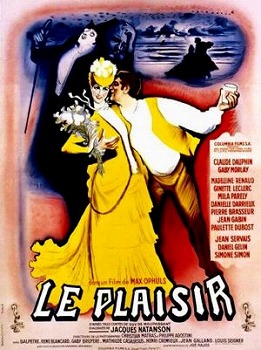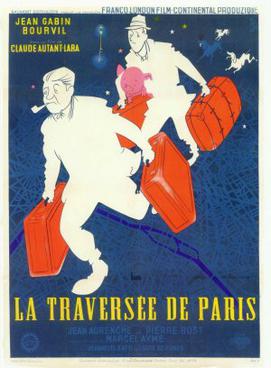 |
| Jean Gabin in Touchez Pas au Grisbi |
Cast: Jean Gabin, René Dary, Dora Doll, Vittorio Sanipoli, Marilyn Buferd, Gaby Basset, Jeanne Moreau, Paul Barge, Denise Clair, Michel Jourdan, Lino Ventura, Paul Frankeur. Screenplay: Jacques Becker, Albert Simonin, Maurice Griffe, based on a novel by Simonin. Cinematography: Pierre Montazel. Production design: Jean d'Eabonne. Film editing: Marguerite Renoir. Music: Jean Wiener.
Grisbi is French slang for "the loot," which in Jacques Becker's classic Touchez Pas au Grisbi is the gold bullion Max (Jean Gabin) has stashed away after a successful heist at Orly. In another film, we'd see the heist, but Becker is not interested in that, but rather in the effect the grisbi has on the gangsters who'd like to get their hands on it. His film is a mood piece and a character study, centered on the aging Max, a guy with an expanding waistline and bags under his eyes, ready to retire from his life of crime and enjoy his ill-gotten gains. But loyalty to his old chum Riton (René Dary) will make it impossible when Riton lets on to his girlfriend Josy (Jeanne Moreau), a showgirl, that Max is sitting on a fortune. Eventually, there will be a chase and a shootout, but most of Becker's film is taken up with a portrait of the autumnal life of the once dashing Max and Riton. As a "gangster grown old" movie, it had an obvious influence on such later films as Louis Malle's Atlantic City (1980) and Martin Scorsese's The Irishman (2019), but it stands on its own, thanks to Gabin's performance and Becker's restrained storytelling.


.png)
.jpg)










